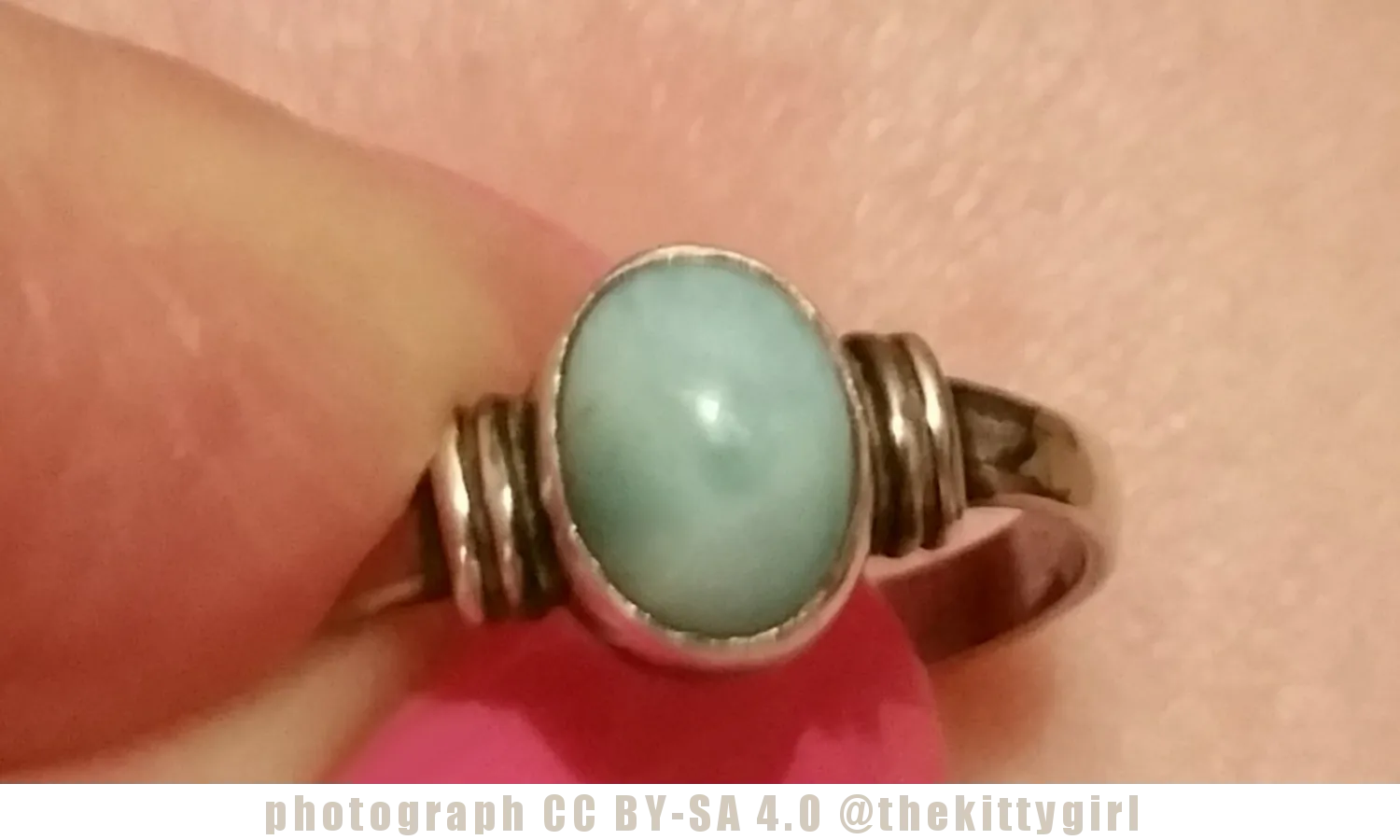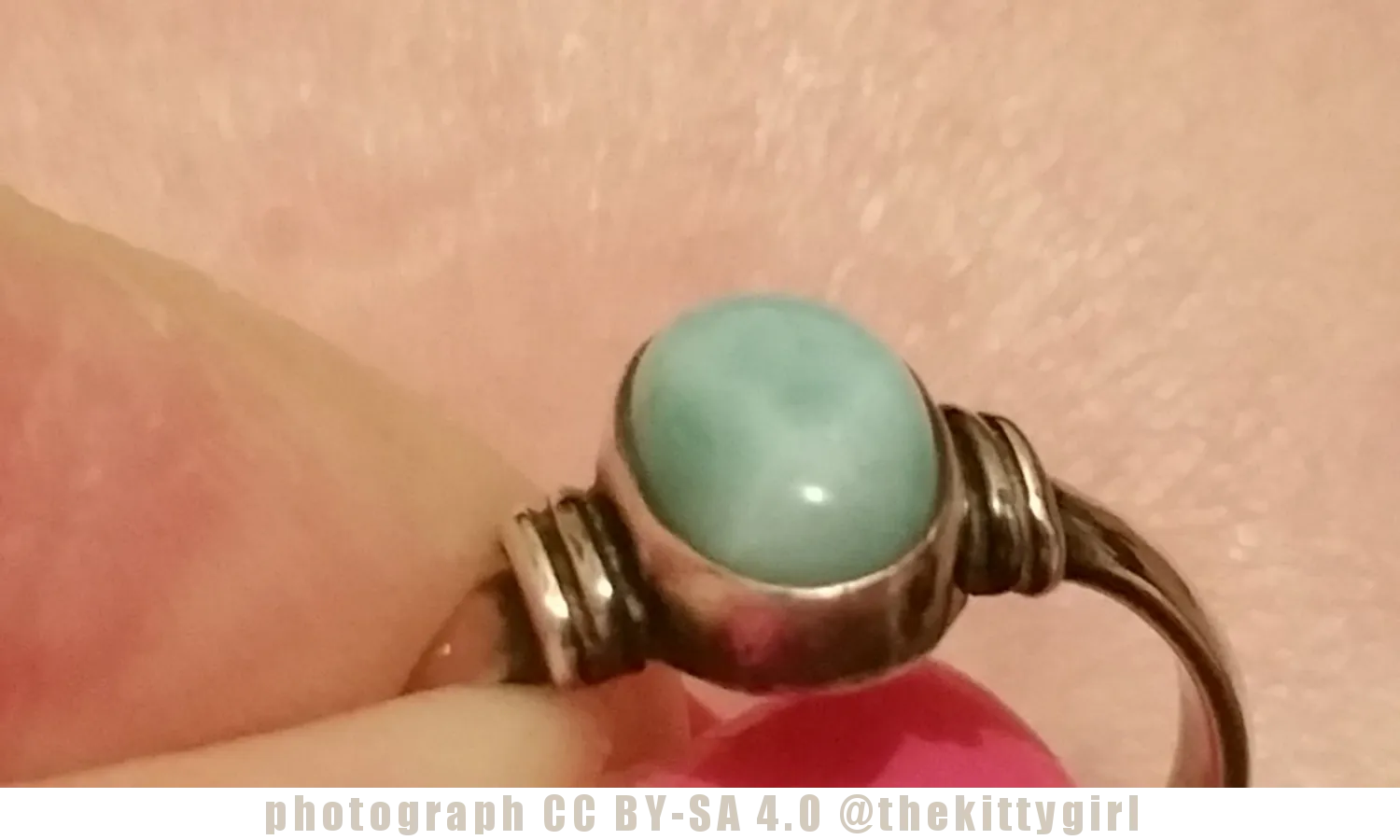The stone was found to be an unusual variety of pectolite (which is usually gray) and was named by Méndez for his daughter, Larissa, plus the Spanish word "mar" (for sea) because of the Caribbean Sea where it was found. As it turns out, the Dominican Republic on the island of Hispaniola in the Caribbean is the only place where Larimar has been found — although gray pectolite is found in Italy, and other places — which makes it a very unusual stone in the world of geology.
Gemologically, blue Larimar is a hydrated sodium calcium silicate with manganese. Its distinct blue color is owed to calcium being replaced by copper impurities. [1]
I found this little ring with a larimar stone in a shop several years ago and was entranced by it. The shop was Avalon in Orlando, FL. The setting is my favorite for jewelry — .925 Sterling Silver. With the semi-precious stone and the silver, items like this are a good investment!

Larimar is a relatively soft stone (4.5 – 5 on the Mohs scale) so care must be taken when it is worn not to hit it against anything or allow it to be scratched. The stone is also sensitive to light and heat, and its blue color can fade if it is exposed to too much light and heat. The most expensive and prized pieces of larimar are a more intense blue than my stone, and varieties that are more whitish are common.

Care should also be taken when storing larimar jewelry so that it is not scratched by another stone, or metal, in the jewelry box. I've had this ring probably 17 years and it is still in good shape because I am careful with it.
SOURCES 1 GemSelect.com: Larimar 2 Wikipedia: Larimar


 to learn more about either of these projects, please visit: @heyhaveyamet or @steemterminal
to learn more about either of these projects, please visit: @heyhaveyamet or @steemterminal22-Jan-2020
Return from Larimar to 𝕜𝕚𝕥𝕥𝕪's Web3 Blog

